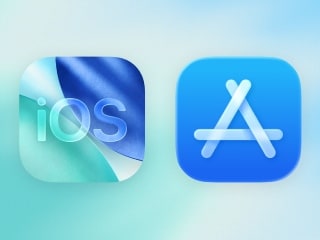- Home
- Internet
- Internet News
- 'The Daily' failure a lesson for digital news
'The Daily' failure a lesson for digital news

Murdoch announced Monday that The Daily, launched as a paid subscription for the Apple tablet, would be shuttered December 15 due to a lack of readers.
The News Corp chief called The Daily exclusively designed for touchscreen tablets "a bold experiment," but acknowledged that it was unable to find enough paying readers to sustain it.
Some staff from the virtual newspaper will shift to the another News Corp. property, New York Post.
Murdoch launched The Daily with much fanfare in February 2011, describing it as a model for the news industry in the face of declining readership and a shift to online news.
The Daily was sold through Apple's App Store and iTunes and cost 99 cents a week or $39.99 a year.
Rebecca Lieb, analyst with the Altimeter Group, said the shutdown was not surprising.
"While it was highly customized for the platform The Daily was a commodity news product," Lieb said. "It didn't offer anything that readers could not get from any other newspaper, and it lacked a brand.
"Had I been Murdoch I would have launched a version of something that was already branded," such as The Wall Street Journal.
The Daily was believed to have around 100,000 paying subscribers, although precise figures were not disclosed. In launching the paper, Murdoch said it would need to recruit around 500,000 readers a week to break even.
In July, Murdoch announced it would cut 29 percent of its staff, or 50 employees.
The paper was initially designed to work on Apple's iPad tablet, and only later made available for some Android devices and smartphones.
Analysts said that relying on the Apple platform turned out to be a mistake.
"This was a segment of a segment of a market," said Lieb.
Jeff Sonderman, a digital media specialist at the Poynter Institute, said this is one of the lessons to learn from The Daily's demise.
"Being the first-of-a-kind is as dangerous as it is exciting in the technology world. With few or no prior examples to learn from, you're left to try stuff and learn the hard way," he said in a blog post.
"Research has since shown that tablet owners are 'digital omnivores' who consume media seamlessly across tablets, smartphones, PCs and print publications. To serve them news on only one platform is not satisfying."
Dan Kennedy, a Northeastern University journalism professor, said the reasons for the failure are now obvious.
"It seems to me that in some respects The Daily was dead on arrival," Kennedy aid.
"It had the disadvantages of a daily newspaper it was published once a day rather than continuously, and it was not well integrated with the broader Web without the advantage of the convenience that print still offers. A noble experiment, perhaps, but one for which few people held out much hope even when it launched."
Ken Doctor, media analyst with the research firm Outsell, said The Daily "got it half right."
"They saw before others that the tablet would be a revolutionary device for reading newspapers and magazines," Doctor said.
"But they didn't focus on the product, which was underwhelming. It was visually stunning but didn't give you a reason to fulfill its promise."
Lieb cites other possible models for digital journalism which may be more successful, such as Flipboard, which delivers customized news on a variety of platforms.
She said paid digital subscriptions may only work for a small number of news outlets.
"If you have a very strong brand name recognition and exclusive content that is available nowhere else, you can charge a subscription fee," she said.
"If you publish news you can get anywhere you really can't charge for that, no matter how well it's packaged."
Get your daily dose of tech news, reviews, and insights, in under 80 characters on Gadgets 360 Turbo. Connect with fellow tech lovers on our Forum. Follow us on X, Facebook, WhatsApp, Threads and Google News for instant updates. Catch all the action on our YouTube channel.
- Samsung Galaxy Unpacked 2025
- ChatGPT
- Redmi Note 14 Pro+
- iPhone 16
- Apple Vision Pro
- Oneplus 12
- OnePlus Nord CE 3 Lite 5G
- iPhone 13
- Xiaomi 14 Pro
- Oppo Find N3
- Tecno Spark Go (2023)
- Realme V30
- Best Phones Under 25000
- Samsung Galaxy S24 Series
- Cryptocurrency
- iQoo 12
- Samsung Galaxy S24 Ultra
- Giottus
- Samsung Galaxy Z Flip 5
- Apple 'Scary Fast'
- Housefull 5
- GoPro Hero 12 Black Review
- Invincible Season 2
- JioGlass
- HD Ready TV
- Laptop Under 50000
- Smartwatch Under 10000
- Latest Mobile Phones
- Compare Phones
- OnePlus 15R
- Realme Narzo 90x 5G
- Realme Narzo 90 5G
- Vivo S50 Pro Mini
- Vivo S50
- OPPO Reno 15c
- Redmi Note 15 5G
- Redmi Note 15 Pro 5G
- Asus ProArt P16
- MacBook Pro 14-inch (M5, 2025)
- OnePlus Pad Go 2
- Poco Pad M1
- Just Corseca Skywatch Pro
- Honor Watch X5
- Acerpure Nitro Z Series 100-inch QLED TV
- Samsung 43 Inch LED Ultra HD (4K) Smart TV (UA43UE81AFULXL)
- Asus ROG Ally
- Nintendo Switch Lite
- Haier 1.6 Ton 5 Star Inverter Split AC (HSU19G-MZAID5BN-INV)
- Haier 1.6 Ton 5 Star Inverter Split AC (HSU19G-MZAIM5BN-INV)












